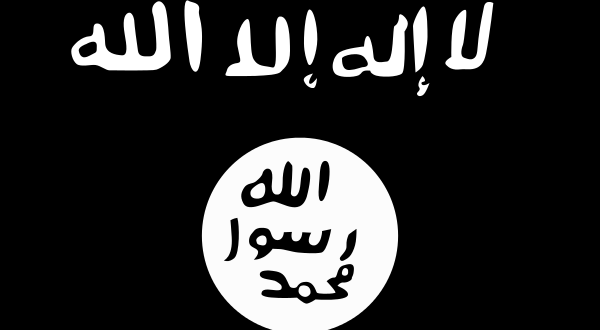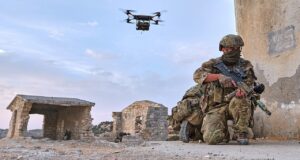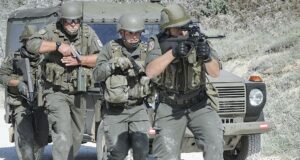–
After the fall of the authoritarian regime of Mohammed Siad Barre in 1991, the state collapsed and Somalia fell into anarchy[2]. Successive UN peacekeeping missions and transitional governments failed to restore order, even the famed ‘Black Hawk Down’ US intervention in 1993 did not halt the rise of militancy, warlords and Islamists. During the chaos, the veteran Al-Ittihad Al-Islamiya (AIAI) emerged with the ummah vision of a greater Somalia formed by annexing parts of Ethiopia, Kenya and Djibouti. By 1997, intervention from Ethiopia had crushed this dream, but elements broke free to travel to Afghanistan to train under the Taleban and Al Qaeda[3]. Originally just thirty-five members strong, most had returned with Adan Hashi Farah “Ayro” in 2003 from the battlefields of Afghanistan. Harakat al Shabaab al-Mujahideen or shortened in the West to al Shabaab, Arabic for “The Movement for Striving Youth” or “The Youth”, was formally founded in 2005 from this element.
Al Shabaab follows in the long ancestry of prominent Somali Islamist groups in seeking the ummah, a vision of the triumph of a unified Islamic state under shari’a law over the centuries old tribalism[4]. From 2006 onwards, it sought to achieve its goals under the unified command of the Union of Islamic Courts (UIC) as the strong militia force[5]. Internal differences arising from the perceived Westernisation and dilution of the UIC following ‘moderate’ Sheikh Sharriff’s election to the leadership led al Shabaab to separate and operate as an independent group[6].
Through exploiting the weakness of the Transitional Federal Government (TFG) and the popular resentment directed against both the Ethiopian troops after their 2006 invasion and the later presence of the African Union Mission in Somalia army (AMISOM), al Shabaab came to resonate with the local population. For those that it did not attract, fear, repression and a violently imposed Islamisation[7] (which included stoning, cutting off limbs and summary executions) was enough to cement its vast territorial control and obtain acceptance/submission from large civilian populations. This, at its 2009-2010 height, included most of southern Somalia and a strong influence throughout the capital of Mogadishu. As its influence spread, al Shabaab’s ranks swelled with experience drawn from the ‘Afghan alumni’, veterans of the anti-Soviet mujahedeen in Afghanistan; Yemeni allies; the merger with Hizb-ul-Islam after years of rivalry and eventual military defeat and training with al Qaeda[8].
The leadership of this original group was focused on three African al Qaeda operators, Abu Talha Al-Sudani, Fadil Harun and Saleh Ali Saleh Nabhan, who are all implicated in the 1998 US embassy bombings in Dar es Salaam and Nairobi[9]. Further links have been identified to the recruiting, training and smuggling of weaponry involved in the 2002 attack in Mombasa, Kenya[10]. Al Shabaab’s formal links with Al Qaeda were announced in February 2012 when new al Qaeda leader Ayman Al-Zawahiri stated ‘‘I hereby declare that the militants of Harakatu Al Shabaab Al- Mujaahedeen of the Hornof Africa are now united with their fellowIslamists”[11] on al Shabaab controlled al-Andalus radio. As such, al Shabaab is no stranger to foreign terrorist attacks, with its history rooted in the Afghan jihad, Yemeni terror cells and Al Qaeda links. Indeed al Shabaab has grown in its original scale of operations and is now turning its attention to international operations against targets as far flung as Burundi[12], the United States[13], Britain[14] and Israel[15].
 Human Security Centre Human Rights and International Security Research
Human Security Centre Human Rights and International Security Research




